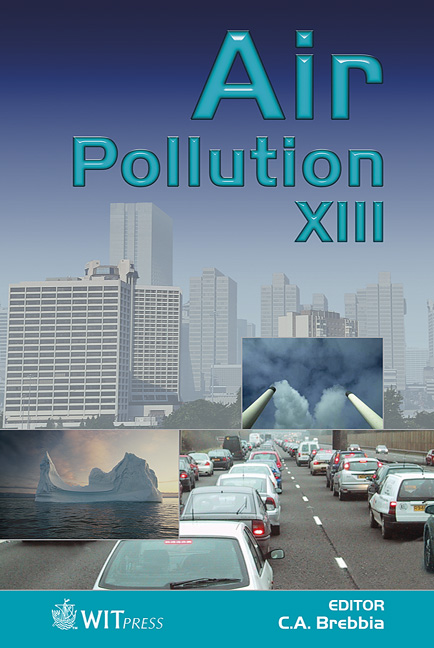Characterization Of Urban And Suburban Aerosols: PM10-2.5 And PM2.5 In Bangkok
Price
Free (open access)
Transaction
Volume
82
Pages
9
Published
2005
Size
2,564 kb
Paper DOI
10.2495/AIR050601
Copyright
WIT Press
Author(s)
W. Jinsart, R. Krerkkaiwal & S. Wangwongwattana
Abstract
Atmospheric PM 10-2.5 (coarse) and PM2.5 (fine) samples were obtained, using a dichotomous air sampler, from three different sites in Bangkok: urban roadside (Din Daeng), urban residential area (Phaya Thai) and suburban (Phutamonthon, 56 kilometers west from the city). The particles were collected on Teflon membrane filters and quantified by the Gravimetric method. The particulate samples were characterized directly on the collecting substrate using a scanning electron microscope equipped with an energy dispersive X-ray spectrometer to investigate size, morphology and compositions. The elements in PM10-2.5 were dominated by iron, silica and calcium. In contrast, carbon and sulfur in PM2.5 were higher than in the coarse fractions. To identify site and composition association, the trace elements (potassium, lead, zinc, copper and manganese) in PM2.5 were analyzed by Graphite Furnace Atomic Absorption Spectroscopy. The concentration of fine particulate matters and element compositions in the high density traffic site were found to be higher than those in the ambient area and the suburban site. The proportion of PM2.5 to PM10 is more than 60%. However the variation of element composition was not directly related to the loading of particulate level. It could depend on the source apportionment and type of pollution rather than the concentration of particulate matters. Keywords: PM2.5, PM10, airborne particles, fine particulate matter, urban air, Bangkok.
Keywords
PM2.5, PM10, airborne particles, fine particulate matter, urban air, Bangkok.





